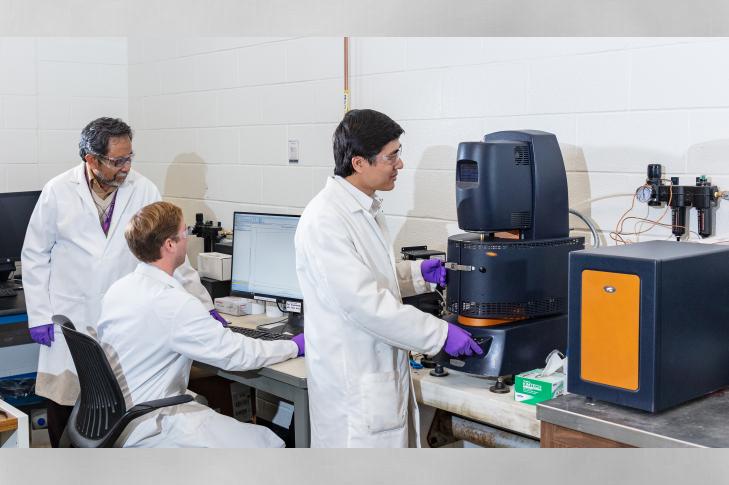Oak Ridge National Laboratory Investigates New Lignin-Nylon Composite 3D Printing Material
Lignin is an organic polymer that is present in the cell walls of many plants, giving them rigidity such as in wood and bark. It’s also a byproduct of biorefinery processes, and, thanks to work by researchers at Oak Ridge National Laboratory (ORNL), it could make up a new kind of 3D printing material. The research is documented in a paper entitled “A path for lignin valorization via additive manufacturing of high-performance sustainable composites with enhanced 3D printability.”
“Finding new uses for lignin can improve the economics of the entire biorefining process,” said ORNL project lead Amit Naskar.
The researchers combined a melt-stable hardwood lignin with conventional plastic – a low-melting nylon – and carbon fiber to create a composite with excellent mechanical properties and strength between layers, as well as extrudability. One of the issues of lignin is that it chars easily and can only be heated to a certain temperature before it becomes too viscous to be extruded. When the researchers combined it with nylon, however, they found that its room temperature stiffness increased while its melt viscosity decreased. The composite had tensile strength similar to nylon alone and lower viscosity than ABS or polystyrene.
The researchers conducted neutron scattering at the High Flux Isotope Reactor and used advanced microscopy at the Center for Nanophase Materials Science to investigate the composite’s nuclear structure. They discovered that the combination of lignin and nylon “appeared to have almost a lubrication or plasticizing effect on the composite,” according to Naskar.
“Structural characteristics of lignin are critical to enhance 3D printability of the materials,” said ORNL’s Ngoc Nguyen.
The researchers were also able to mix a higher percentage of lignin – 40 to 50 percent by weight – and then add 4 to 16 percent carbon fiber. The result was a new composite that heats up more easily, flows faster, and results in a stronger 3D printed product.
“ORNL’s world-class capabilities in materials characterization and synthesis are essential to the challenge of transforming byproducts like lignin into coproducts, generating potential new revenue streams for industry and creating novel renewable composites for advanced manufacturing,” said Moe Khaleel, Associate Laboratory Director for Energy and Environmental Sciences.
 The lignin-nylon composite is patent-pending, and the researchers will continue to work with it to refine it and find other ways to process it. ORNL has been working with lignin for several years, and has done a lot of work with other novel 3D printing materials as well. As the researchers point out, petroleum-based thermoplastics still dominate the 3D printing materials market; the market for wood- and plant-based 3D printing materials is still limited because of their inherent difficulties in melt processing.
The lignin-nylon composite is patent-pending, and the researchers will continue to work with it to refine it and find other ways to process it. ORNL has been working with lignin for several years, and has done a lot of work with other novel 3D printing materials as well. As the researchers point out, petroleum-based thermoplastics still dominate the 3D printing materials market; the market for wood- and plant-based 3D printing materials is still limited because of their inherent difficulties in melt processing.
“Our study opens a new avenue of using isolated lignin as a feedstock for formulating 3D-printing materials having superior mechanical and printing characteristics,” they conclude. “Our findings have the potential to create additional revenue streams for biomass processing industries via the added value of lignin. In addition, it may accelerate installation of pilot biomass fractionation units in rural areas before feeding the whole biomass to a biorefinery and boost local polymer compounding industries that manufacture or compound materials for 3D printing and injection molding.”
Authors of the paper include Ngoc A. Nguyen, Sietske H. Barnes, Christopher C. Bowland, Kelly M. Meek, Kenneth C. Littrell, Jong K. Keum and Amit K. Naskar.
Discuss this and other 3D printing topics at 3DPrintBoard.com or share your thoughts below.
[Source/Images: ORNL]
Subscribe to Our Email Newsletter
Stay up-to-date on all the latest news from the 3D printing industry and receive information and offers from third party vendors.
Print Services
You May Also Like
3D Printing News Briefs & Events Roundup: March 15, 2025
In this weekend’s combined 3D Printing News Briefs and Webinars/Events Roundup, we’re covering news about automotive and construction 3D printing, along with AM Forum, TCT Asia, the Experience Stratasys Tour,...
3D Printing News Briefs & Events Roundup: March 8, 2025
Starting this week, we’re shaking things up a little! We’ll be combining our 3D Printing News Briefs with a more curated weekly list of 3D printing webinars and events to...
Combinatory Manufacturing, Happening at Last?
In 2009, I introduced the concept of “combinatory manufacturing” while at Shapeways. This approach integrates 3D-printed components with conventionally manufactured ones to create end-use products. Unlike merely using 3D printing...
Boston’s Additive Edge: Fluent Metal’s Approach to Liquid Metal 3D Printing
Stepping into the heart of Boston’s innovation landscape, I found myself at Fluent Metal’s headquarters in Cambridge. From the moment I walked through the doors of the startup’s space, the...



























